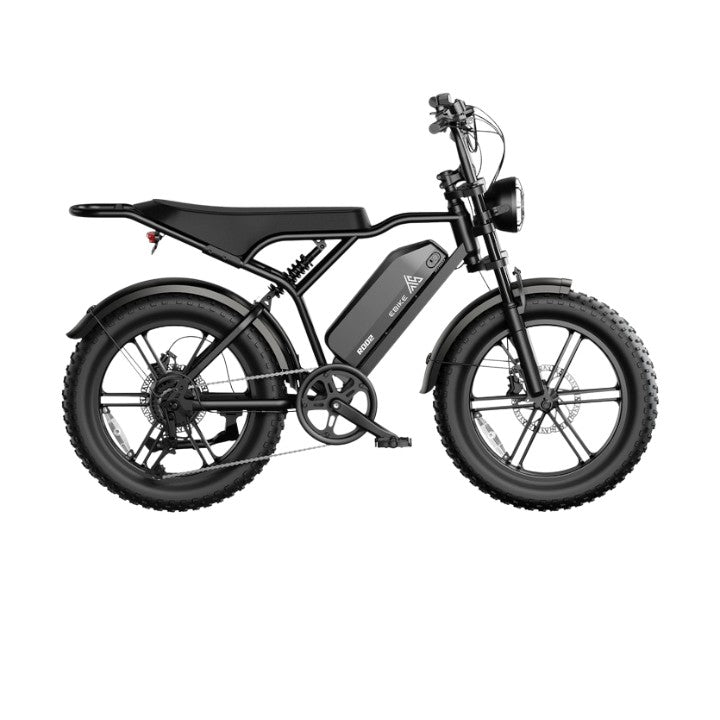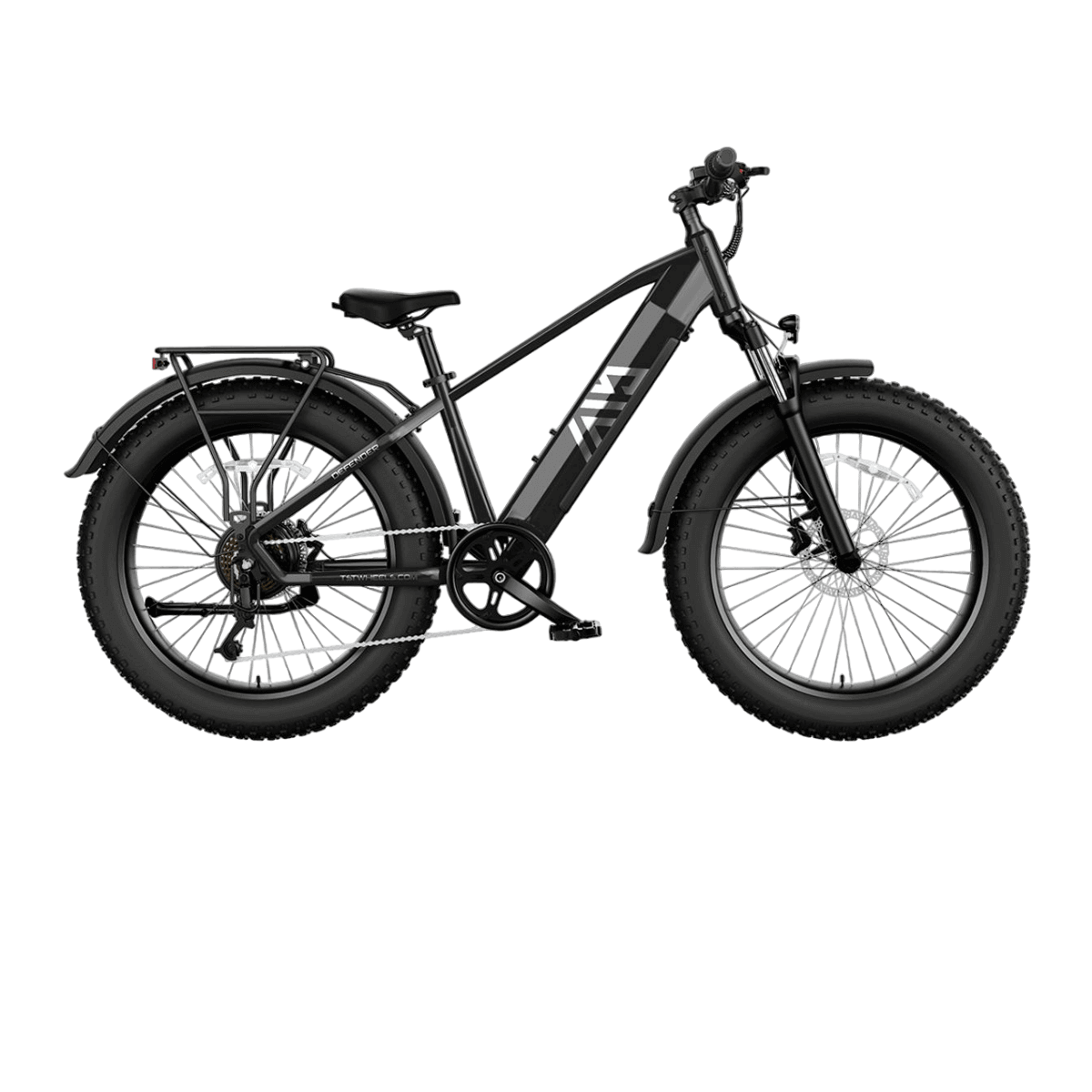Understanding California e-bike laws is essential for safe, legal riding and to avoid fines or penalties. The 2025 regulations classify e-bikes into three classes with specific speed, power, and equipment rules. Models like the TST Defender 26 and Dreamer 27 comply with these laws, offering riders safe, high-quality, and cost-effective options tailored for California’s terrain and legal framework.
How Are E-Bikes Classified Under California Law?
California classifies e-bikes into three classes based on motor assistance and speed. Class 1 e-bikes provide pedal-assist up to 20 mph without a throttle. Class 2 e-bikes offer throttle-powered assistance up to 20 mph. Class 3 e-bikes deliver pedal-assist up to 28 mph and may include a throttle. All classes must have fully operable pedals and a motor not exceeding 750 watts. These classifications determine where e-bikes can be legally operated and the applicable safety requirements.
California law divides e-bikes into three classes based on motor assistance and speed limits:
- Class 1: Pedal-assist only, motor assists up to 20 mph, no throttle allowed.
- Class 2: Throttle-assisted, motor assists up to 20 mph, throttle permitted.
- Class 3: Pedal-assist only, motor assists up to 28 mph, no throttle allowed, speedometer required.
These classifications determine where and how e-bikes can be legally ridden.
What Are the Key 2025 Changes in California E-Bike Laws?
In 2025, California implemented significant updates to e-bike regulations. A new law mandates that all e-bike batteries must be tested and certified by an accredited lab by January 1, 2026, to ensure safety. Additionally, the state clarified e-bike classifications, emphasizing that any e-bike exceeding 750 watts or capable of speeds over 28 mph is no longer considered a legal e-bike. These changes aim to enhance rider safety and standardize e-bike specifications across the state.
The 2025 law introduces important updates:
- Class 1 and Class 3 e-bikes must be pedal-assist only; throttles are banned except for walk mode up to 3.7 mph.
- Maximum motor power is capped at 750 watts to prevent high-speed modifications.
- All e-bike batteries sold must be safety-certified by January 1, 2026.
- Class 3 riders must be at least 16 years old and wear helmets; helmet laws for minors under 18 apply to all classes.
- Speed-modification kits are illegal, and e-bikes exceeding limits are classified as mopeds or motorcycles.
Where Can You Legally Ride E-Bikes in California?
Legal riding areas for e-bikes in California depend on their classification. Class 1 and Class 2 e-bikes are generally permitted on bike paths, lanes, and trails, unless local ordinances state otherwise. Class 3 e-bikes are typically allowed on roadways and bike lanes adjacent to roads but are often restricted from bike paths and trails unless explicitly permitted by local authorities. Always check local regulations to ensure compliance with area-specific rules.
E-bikes are generally allowed wherever traditional bicycles are permitted, with some restrictions:
- Class 1 and 2 e-bikes can use bike lanes, multi-use trails, and most bike paths.
- Class 3 e-bikes are restricted from many bike paths and must use roadways or designated bike lanes.
- Local jurisdictions may impose additional rules on sidewalk riding, parking, and trail access.
Always check local ordinances before riding.
What Are the Helmet and Age Requirements for E-Bike Riders?
Helmet and age requirements vary by e-bike class in California. For Class 1 and Class 2 e-bikes, riders under 18 years must wear a helmet, while those 18 and older are not mandated to do so. Class 3 e-bike riders, regardless of age, are required to wear a helmet, and operators must be at least 16 years old. These regulations are designed to enhance safety, especially for higher-speed e-bike categories.
Helmet laws vary by class and age:
- Riders under 18 must wear helmets on all e-bike classes.
- Class 3 riders must wear helmets regardless of age and be at least 16 years old.
- Class 1 and 2 riders have no minimum age statewide but must wear helmets if under 18.
These laws aim to enhance rider safety amid increasing e-bike use.
How Do Power and Speed Limits Affect E-Bike Legality?
E-bikes must not exceed 750 watts of motor power and 20 mph (Class 1 & 2) or 28 mph (Class 3) assisted speed. Exceeding these limits disqualifies the bike as an e-bike, subjecting it to motor vehicle regulations including licensing and registration. This ensures e-bikes remain distinct from motorcycles and mopeds, maintaining safety and accessibility.
Chart title: California E-Bike Class Summary
| Class | Assistance Type | Max Speed (mph) | Throttle Allowed | Helmet Required | Age Limit |
|---|---|---|---|---|---|
| Class 1 | Pedal-assist only | 20 | No | Under 18 only | None |
| Class 2 | Throttle & pedal | 20 | Yes | Under 18 only | None |
| Class 3 | Pedal-assist only | 28 | No | All ages | 16+ |
What Are the Safety and Equipment Requirements for E-Bikes?
California law stipulates specific safety and equipment standards for e-bikes. All e-bikes must have fully operable pedals and motors not exceeding 750 watts. When operated during darkness, e-bikes must be equipped with a white front lamp visible from 300 feet, a red rear reflector visible from 500 feet, and reflectors on the pedals and sides. Additionally, starting January 1, 2026, all e-bike batteries sold in California must be certified for safety by an accredited laboratory.
California requires:
- Class 3 e-bikes to have a speedometer.
- All e-bikes to have front and rear lights and reflectors when ridden at night.
- Batteries to meet safety certifications by 2026 to prevent fire hazards.
- Compliance with local laws regarding parking and trail use.
Buying Tips
When purchasing an e-bike in California, consider:
- Selecting models compliant with 2025 laws, like TST Defender 26 for rough terrain or Dreamer 27 for commuting.
- Confirming motor power does not exceed 750 watts and that the bike fits your desired class.
- Checking for battery certification to ensure safety and legal compliance.
- Prioritizing safety features such as hydraulic disc brakes, lights, and speedometers (for Class 3).
- Reviewing local regulations for trail and sidewalk access.
These tips help you choose a legal, safe, and enjoyable e-bike.
Are you an electric bike enthusiast in California? If so, you may be wondering about the ebike laws that apply to you. As electric bikes continue to gain popularity as a convenient and eco-friendly mode of transportation, riders need to understand the rules and regulations surrounding their use.
From speed limits to helmet requirements, knowing the electric bike laws can ensure a safe and legal riding experience. In this guide, we'll break down everything you need to know about ebike laws in California and how they impact your riding experience. So buckle up, or rather, pedal up, and let's dive into the world of electric bike laws.
Understanding the E-Bike Boom in California
California's e-bike market has experienced significant growth, driven by environmental concerns, urban congestion, and the desire for cost-effective transportation. This surge has prompted the state to implement updated regulations in 2025 to ensure safety and clarity for all e-bike users.
As the popularity of electric bikes continues to soar, it's no surprise that we're experiencing a true boom in the e-bike industry. These innovative two-wheelers are quickly becoming a go-to mode of transportation for many Californians. And why wouldn't they be? With their eco-friendly design and convenience, it's no wonder that more and more people are choosing to ditch their traditional bikes or cars in favor of an electric upgrade.
One of the factors contributing to this e-bike boom is the increasing awareness of the benefits they offer. With a long-range electric bike like TSTebike, riders can travel longer distances without breaking a sweat. These bikes feature powerful motors and high-capacity batteries, making it easier than ever to conquer steep hills or commute to work with ease.
Of course, as the demand for electric bikes rises, so does the importance of understanding the laws surrounding their use. California, in particular, has specific ebike laws in place that riders must adhere to. Knowing these regulations is not only crucial for your safety but also for ensuring that you're riding within the legal boundaries.
In the next section, we'll dive deeper into the importance of understanding state-specific e-bike laws, with a focus on California. So, stay tuned and get ready to unlock all the information you need to enjoy your TSTebike to the fullest while abiding by the rules of the road.
Understanding the Basics of California's E-Bike Laws
As of 2025, California classifies e-bikes into three categories:
- Class 1: Pedal-assist only, up to 20 mph.
- Class 2: Throttle-assisted, up to 20 mph.
- Class 3: Pedal-assist only, up to 28 mph; no throttle allowed.
All e-bikes must have operable pedals and motors not exceeding 750 watts.
California's e-bike laws may seem daunting at first, but understanding the basics is essential for a safe and legal riding experience. In the Golden State, electric bikes are classified into three categories based on their top speed and whether they have a pedal-assist or throttle mechanism. These categories include Class 1, Class 2, and Class 3 electric bikes.
Class 1 e-bikes are equipped with a pedal-assist motor that provides assistance while the rider is pedaling. These bikes have a top speed of 20 mph and are allowed on bike lanes, paths, and trails unless otherwise prohibited.
Class 2 e-bikes, on the other hand, have a throttle mechanism that allows the rider to control the motor without pedaling. These bikes also have a top speed of 20 mph and are subject to the same regulations as Class 1 e-bikes.
Finally, Class 3 e-bikes are considered speed pedelecs and can reach speeds up to 28 mph. These bikes are allowed on roads with speed limits of 35 mph or lower, but they are not permitted on bike paths or trails.
Regardless of the type of e-bike you have, it's important to note that riders must be at least 16 years old and wear a helmet. Additionally, it's crucial to remember that e-bikes are not allowed on sidewalks unless specifically permitted by local ordinances.
By understanding these basics, you can confidently navigate California's roads and trails while enjoying the long-range capabilities of your electric bike. Stay informed, ride responsibly, and have fun exploring the beautiful state of California on your e-bike!
TSTebike and Compliance with California E-Bike Laws
TSTebike models are designed to comply with California's e-bike regulations. Their bikes feature motors within the 750-watt limit and adhere to class-specific requirements, ensuring riders can legally and safely operate them on designated paths and roads.
When it comes to TSTebike and compliance with California E-Bike Laws, riders can rest assured that these electric bikes are designed to meet and exceed the state's regulations. TSTebike are known for their exceptional performance and long-range capabilities, making them a popular choice among electric bike enthusiasts in California.
Whether you own a Class 1, Class 2, or Class 3 electric bike from TSTebike, you can trust that these bikes are built to comply with California's specific e-bike laws. With a top speed of 20 mph, TSTebike fall within the speed limits allowed for Class 1 and Class 2 e-bikes, making them ideal for cruising along bike lanes, paths, and trails.
TSTebike are equipped with powerful motors and high-capacity batteries, ensuring that riders can enjoy long rides without worrying about running out of power. These long-range electric bikes are perfect for commuting to work, exploring scenic routes, or simply enjoying a leisurely ride through California's beautiful landscapes.
By choosing TSTebike, riders can have peace of mind knowing that their electric bike is compliant with California's e-bike laws. Enjoy the freedom and convenience of a TSTebike while staying within the legal boundaries set forth by the state. Get ready to embark on exciting adventures and explore California like never before with your TSTebike.
Why Choose TSTebike? Key Features and Benefits: Mental and Physical Perks of Riding TSTebike
TSTebike offers reliable, long-range e-bikes that enhance both mental and physical well-being. Riding promotes cardiovascular health, reduces stress, and provides an eco-friendly commuting alternative. Their models are built for comfort and performance, making them suitable for various riders.
If you're in the market for an electric bike, there's no better choice than TSTebike. These powerful and reliable e-bikes offer a range of key features and benefits that will enhance your riding experience, both mentally and physically.
First and foremost, riding a TSTebike can have a positive impact on your mental well-being. The freedom and joy that comes with riding an electric bike can help reduce stress and improve your overall mood. Whether you're commuting to work, running errands, or simply enjoying a leisurely ride, the experience of gliding effortlessly on your TSTebike can provide a much-needed boost to your mental health.
In addition to the mental benefits, TSTebike also offer numerous physical perks. With their powerful motors and high-capacity batteries, these e-bikes make it easy to conquer steep hills and travel longer distances without breaking a sweat. You can get a full-body workout while still enjoying the convenience of an electric bike.
Another key feature of TSTebike is their exceptional performance. These e-bikes are known for their long-range capabilities, allowing you to explore more of California's beautiful landscapes without worrying about running out of power. Whether you're taking a scenic route or commuting to work, you can rely on your TSTebike to get you there and back with ease.
So, why choose TSTebike? The mental and physical benefits, along with their outstanding performance and reliability, make these electric bikes the perfect choice for riders in California. Experience the joy and freedom of riding a TSTebike and unlock the full potential of your e-bike adventures.
Safety Tips for TSTebike Riders in California
To ensure safety:
- Always wear a helmet, especially for Class 3 e-bikes.
- Adhere to speed limits and ride in designated areas.
- Regularly maintain your e-bike, checking brakes and tires.
- Use lights and reflective gear when riding at night or in low visibility conditions.
When it comes to riding your TSTebike in California, safety should always be a top priority. To ensure a safe and enjoyable riding experience, it's important to follow these safety tips:
- Always wear a helmet: Regardless of your age or the type of e-bike you ride, wearing a helmet is essential. It protects your head in case of a fall or collision and can prevent serious injuries.
- Observe traffic laws: Treat your TSTebike like any other vehicle on the road. Obey traffic signals, stop signs, and yield to pedestrians. Ride in the same direction as traffic, and use hand signals when turning.
- Stay visible: Make sure other road users can see you by wearing bright and reflective clothing. Use front and rear lights on your e-bike, especially when riding at dusk or dawn.
- Be aware of your surroundings: Always stay alert and watch out for potential hazards. Scan the road ahead, check blind spots, and be mindful of parked cars opening their doors.
- Maintain your e-bike: Regularly check the brakes, tires, and lights on your TSTebike. Keeping your bike in good condition will help prevent accidents caused by mechanical failures.
- Ride defensively: Assume that other drivers may not see you, and anticipate their actions. Give yourself plenty of space and avoid aggressive maneuvers.
By following these safety tips, you can confidently ride your TSTebike in California while minimizing the risk of accidents or injuries. Remember, safety is key to enjoying your e-bike adventure to the fullest!
Conclusion
To encourage responsible e-bike use, always prioritize safety. Wear a helmet, follow traffic laws, and stay visible by using lights and reflective clothing. Additionally, be aware of your surroundings and anticipate potential hazards.
Furthermore, promoting a positive image of e-bike riders is essential. Respect other road users and share the road responsibly. Ride defensively and give ample space to vehicles and pedestrians.
Let's embrace the freedom and convenience that e-bikes offer while being responsible and respectful riders. Together, we can create a harmonious and sustainable future for e-biking in California.














Leave a comment
All comments are moderated before being published.
This site is protected by hCaptcha and the hCaptcha Privacy Policy and Terms of Service apply.